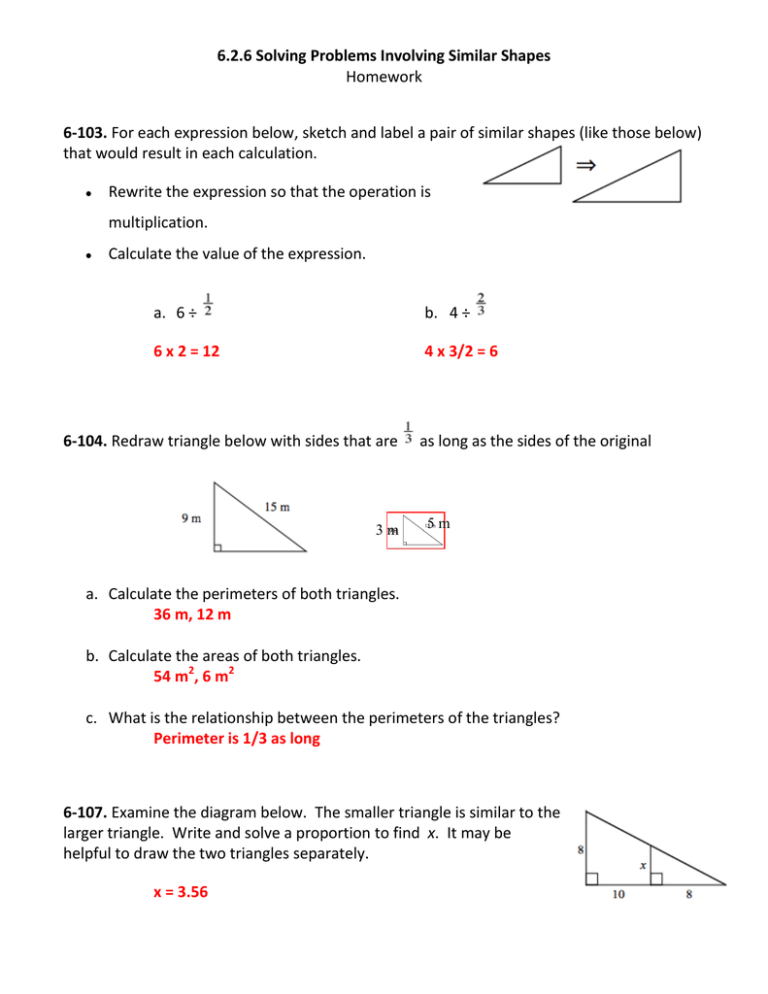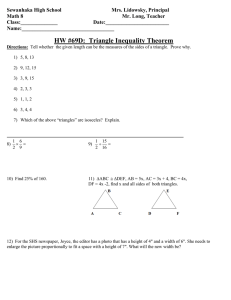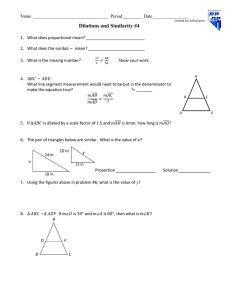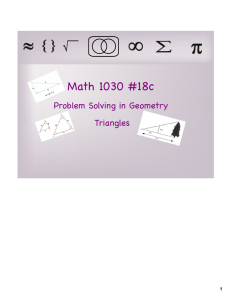6.2.6 Solving Problems Involving Similar Shapes Homework 6
advertisement

6.2.6 Solving Problems Involving Similar Shapes Homework 6-103. For each expression below, sketch and label a pair of similar shapes (like those below) that would result in each calculation. Rewrite the expression so that the operation is multiplication. Calculate the value of the expression. a. 6 ÷ b. 4 ÷ 6 x 2 = 12 4 x 3/2 = 6 6-104. Redraw triangle below with sides that are 3m as long as the sides of the original 5m a. Calculate the perimeters of both triangles. 36 m, 12 m b. Calculate the areas of both triangles. 54 m2, 6 m2 c. What is the relationship between the perimeters of the triangles? Perimeter is 1/3 as long 6-107. Examine the diagram below. The smaller triangle is similar to the larger triangle. Write and solve a proportion to find x. It may be helpful to draw the two triangles separately. x = 3.56 6-105. Lucy and Marissa each designed a box plot to represent this data set: 16 18 19 19 25 26 27 32 35 Their plots are shown below. Which plot is scaled correctly and why? Explain the mistakes in the incorrect plot. a is correct a. b. 6-106. Draw a coordinate graph, and then plot and connect the following points: A(−3, 1), B(−1, 3), C(4, 2), D(2, 0). a. What is the shape you created? parallelogram b. Reflect the shape across the x-axis. List the coordinates of the new points. A(−3, −1), B(−1, −3), C(4, −2), D (2, 0) c. Multiply each coordinate of the original shape by 3. Graph the dilated shape. What are the new coordinates of the points? (−9, 3), (−3, 9), (12, 6), (6, 0)



